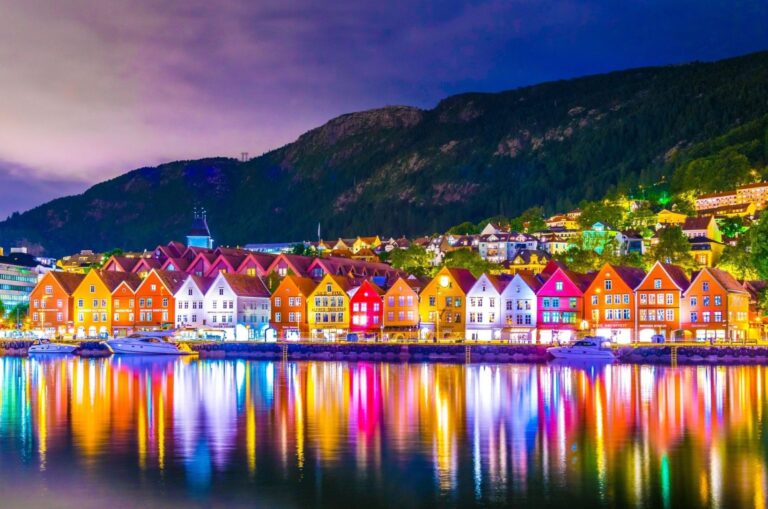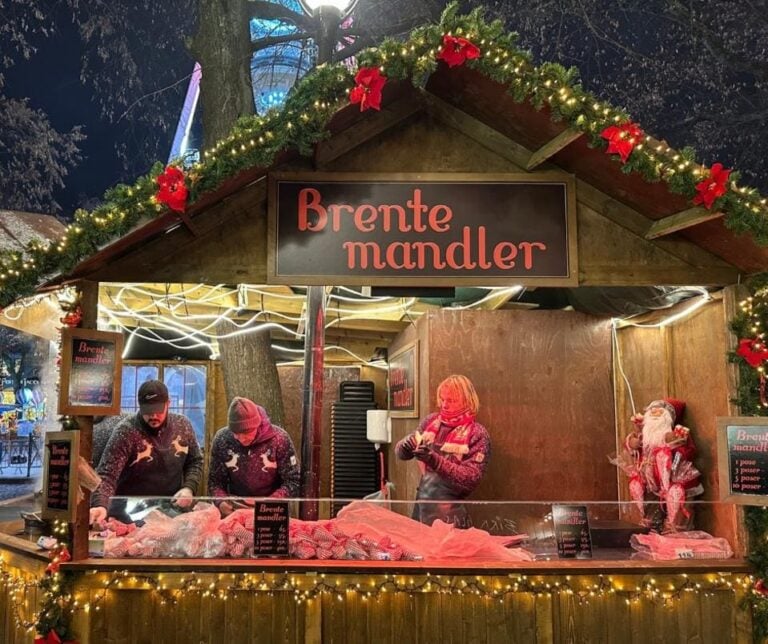Learning a new language is an exciting journey, and Norwegian is no exception. Here's how to get started learning the different colours in the Norwegian language.
Whether you're visiting Norway for its stunning fjords and northern lights or planning to move here for work or study, mastering the basics of the language can greatly enhance your experience.

One of the foundational aspects of any language is learning the colours, as they are frequently used in daily conversations, descriptions, and even cultural references.
In this article, we'll explore the colours in Norwegian (fargene på norsk), providing you with a comprehensive guide to help you get started on your language learning journey.
Introduction to Norwegian Colours
Colours are a fundamental part of our daily lives, used to describe everything from the clothes we wear to the food we eat and the scenery around us.
By tackling colours early in your journey of learning Norwegian, you'll not only be able to describe your surroundings more accurately but also engage in more detailed conversations with locals. Additionally, understanding colours in Norwegian can help you appreciate the country's rich culture and natural beauty even more.
Norwegian, like English, uses a variety of words to describe colours. Some of these words may sound familiar, while others might be entirely new to you. There's also a major grammatical difference to understand.
Learn Norwegian Now: Norwegian Class 101 / The Mystery of Nils
In Norwegian, the spelling of colours changes based on grammatical context. For instance, “rød” (red) changes to “rødt” when describing a neuter noun and “røde” when used in plural or definite forms.

Understanding these variations is crucial for accurate communication, as it reflects the gender, number, and definiteness of the nouns they describe.
Primary Colours in Norwegian
Let's start with the basics: the primary colours. These are the colours from which all other colours are derived, and so they are essential to know.
Red (Rød)
- Pronunciation: [røːd]
- Example sentence: “Hun har på seg en rød kjole.” (She is wearing a red dress.)
- Alternate spellings: “rødt” (neuter singular), “røde” (plural/definite)
Blue (Blå)
- Pronunciation: [blɔː]
- Example sentence: “Himmelen er blå i dag.” (The sky is blue today.)
- Alternate spellings: “blått” (neuter singular), “blåe” (plural/definite)
Yellow (Gul)
- Pronunciation: [ɡʉːl]
- Example sentence: “Solen er gul.” (The sun is yellow.)
- Alternate spellings: “gult” (neuter singular), “gule” (plural/definite)
Secondary Colours in Norwegian
Next, we'll look at the secondary colours, which are created by mixing primary colours. These are also important to know and are commonly used in everyday language.
Green (Grønn)
- Pronunciation: [ɡrønn]
- Example sentence: “Gresset er grønt.” (The grass is green.)
- Alternate spellings: “grønt” (neuter singular), “grønne” (plural/definite)
Orange (Oransje)
- Pronunciation: [uˈranʃə]
- Example sentence: “Hun spiste en oransje appelsin.” (She ate an orange orange.)
- Alternate spellings: “oransje” remains the same in all contexts.
Purple (Lilla)
- Pronunciation: [ˈlilːa]
- Example sentence: “Blomstene er lilla.” (The flowers are purple.)
- Alternate spellings: “lilla” remains the same in all contexts.
Other Colours
In addition to primary and secondary colours, it's useful to know some tertiary colours and other common shades. Here are a few more colours to add to your vocabulary:
Pink (Rosa)
- Pronunciation: [ˈruːsa]
- Example sentence: “Hun liker rosa blomster.” (She likes pink flowers.)
- Alternate spellings: “rosa” remains the same in all contexts.
Brown (Brun)
- Pronunciation: [brʉːn]
- Example sentence: “Bjørnen er brun.” (The bear is brown.)
- Alternate spellings: “brunt” (neuter singular), “brune” (plural/definite)
Black (Svart)
- Pronunciation: [svart]
- Example sentence: “Kaffen er svart.” (The coffee is black.)
- Alternate spellings: “svart” (neuter singular), “svarte” (plural/definite)
White (Hvit)
- Pronunciation: [ʋiːt]
- Example sentence: “Snøen er hvit.” (The snow is white.)
- Alternate spellings: “hvitt” (neuter singular), “hvite” (plural/definite)
Gray (Grå)
- Pronunciation: [ɡrɔː]
- Example sentence: “Skyene er grå.” (The clouds are gray.)
- Alternate spellings: “grått” (neuter singular), “gråe” (plural/definite)
Cultural Significance of Colours in Norway
Colours in Norway, like in many cultures, can have specific connotations and cultural significance.

For example, the colour red (rød) is often associated with Christmas (jul) in Norway, where it symbolises warmth and festivity. Yet, as with many cultures, it also signifies danger on road signs.
Similarly, white (hvit) is linked to purity and is commonly seen during winter when the landscape is blanketed in snow.
Understanding these cultural nuances can enrich your language learning experience and help you connect more deeply with Norwegian culture.
Useful Phrases and Expressions
In addition to individual colour words, it's helpful to learn some common phrases and expressions that use colours. Here are a few examples:
- “Å se rødt”
- Literal translation: “To see red”
- Meaning: To become very angry
- Example: “Han så rødt da han hørte nyheten.” (He saw red when he heard the news.)
- “En hvit løgn”
- Literal translation: “A white lie”
- Meaning: A harmless or small lie
- Example: “Hun fortalte en hvit løgn for å ikke såre ham.” (She told a white lie not to hurt him.)
- “Grønn av misunnelse”
- Literal translation: “Green with envy”
- Meaning: Very envious or jealous
- Example: “Hun var grønn av misunnelse da hun så bilen hans.” (She was green with envy when she saw his car.)
Top Tips for Learning Colours in Norwegian
Here are some practical tips to help you remember and use colours in Norwegian:
Learn Norwegian Now: Norwegian Class 101 / The Mystery of Nils
- Practice with Flashcards: Create flashcards with the colour on one side and the Norwegian word on the other. This can help reinforce your memory through visual association.
- Label Objects Around You: Use sticky notes to label objects in your home with their Norwegian colour names. This constant exposure can help you remember the words more easily.
- Use Colours in Sentences: Practice forming sentences using colours. This will not only help you remember the words but also improve your overall language skills.
- Engage with Native Speakers: If possible, try to practice with native Norwegian speakers. This can provide you with real-life context and usage examples, making the learning process more effective.
- Watch Norwegian Media: Watching Norwegian TV shows, movies, or YouTube channels can expose you to how colours are used in everyday conversations. Pay attention to how colours are described and try to mimic the pronunciation.
Learning the colours in Norwegian is a great way to start building your vocabulary and getting comfortable with the language.
Colours are used in many aspects of daily life, and by mastering them, you'll be better equipped to describe your surroundings, express yourself, and engage in conversations.
So, whether you're marvelling at the red sunsets, the blue fjords, or the green forests of Norway, you'll now have the words to describe these beautiful scenes in Norwegian.

